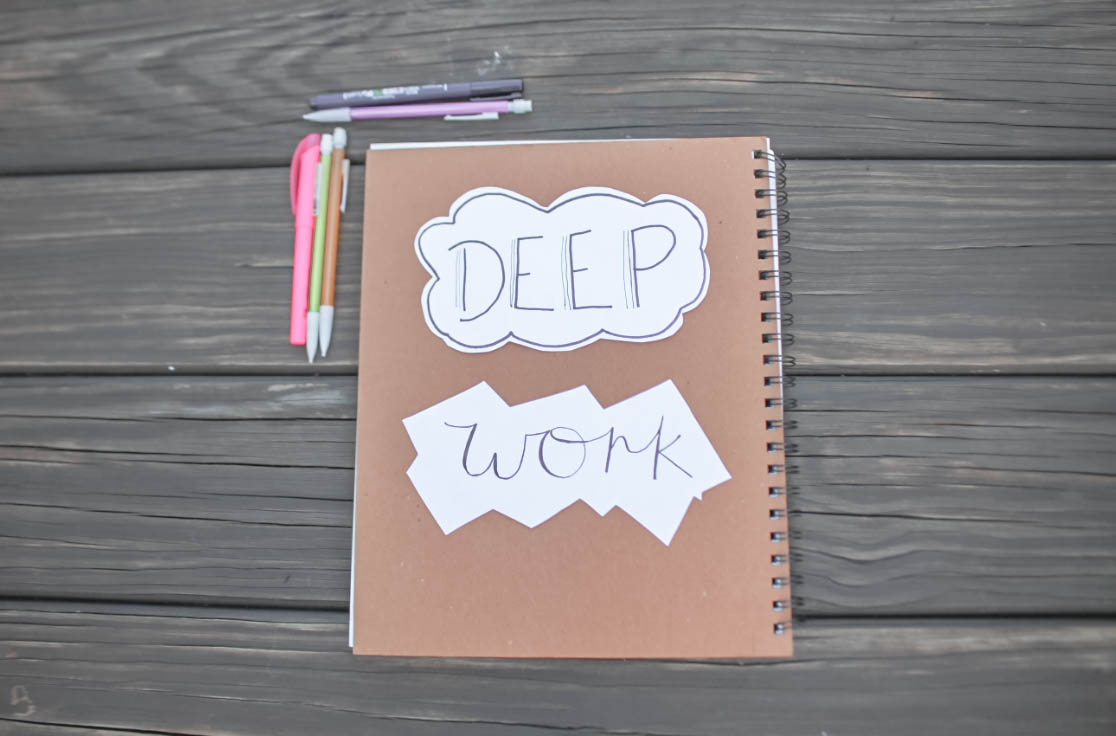This past week, we spent more time reading Cal Newport’s Deep Work. During Section, “Rule #1” he dives into detail about different deep work methods. I found this section interesting because it demonstrates the way various schedules allow for deep work. During the previous chapters, I had a pessimistic voice in my head; I’ve been thinking that constant deep work sounds great but is unrealistic with the ability to hold many full-time jobs. Many graphic design and marketing projects are collaborative. I can’t lock myself in a cabin and work because then I couldn’t do an integral part of my job. Therefore learning that there are various approaches helped make the prospect more realistic.
4 Methods of Deep Work
The first method described is the monastic philosophy. This was the most extreme method. The individual completely cuts themselves off from shallow distractions. In the examples people tended to seclude themselves without modern communications. For instance, Knuth cut himself off from the outside world to complete his writing. He only communicated with people through handwritten letters and enjoyed the peace of not having constant alerts. To me, the individuals that engaged in this method seem the most snooty. I don’t like when people believe that being less digitally connected makes them superior to others. I like to read using e-books and some people disapprove of that habit because I’m not using paperbacks. These individuals give me the same feeling. I think completely cutting yourself off is too drastic as there are options that allow for more social behaviors.
The next method is the bimodal philosophy, which is when a thinker goes through periods of retreat. During this method, people divide their time between large periods of shallow work and deep work. One of the biggest factors for this method is the need for a flexible schedule and commitments. This concept is quite interesting to me. There are not many jobs where people can disappear for a few months to complete work, but I like the idea of the split life. You can still enjoy normal activities and workloads for the majority of the year. But you then figure out where/ when you work best and take time to do deep work in those periods. I don’t see myself enacting this method since I will be working full time, but it seems like the most fun option.
The third method is the rhythmic philosophy where deep work sessions get slowly added into your regular habits. An example could be waking up at 5 am to do your deep work tasks before going to your normal work and shallow activities. This method requires people to have strong self-control in scheduling. This method is the most achievable to me. Although I like sleeping too much to wake up at 5 am, I know a bunch of people who start their days early to work out. They plan accordingly and before work set aside time to exercise and get ready for their day. If there are tasks that need to be done, it is easily conceivable that one could just spend that time doing deep work.
The final method is the journalistic philosophy. This method is not for deep work novices, as it requires individuals to rapidly switch their minds from shallow to deep work. The journalistic approach is when a thinker engages in deep work whenever they have spare time in their schedule. Hopefully, with time I could achieve this level of skill because I like this method. I would have to be self-motivated but I could see myself finding time to set aside for deep work. It may not be early in the morning, but it could be during afternoon breaks. Newport emphasizes that there is no one way to do deep work. Instead, it is up to the individual to figure out which approach works with their schedule and personal habits.
4 Disciplines of Execution
During this section, Newport also talks about the 4 disciplines of execution; these help companies execute high-level strategies.
- The first discipline is to focus on the main tasks that are important to you. This is integral because it is too difficult to work on many tasks at once. For instance, if you are trying to master Photoshop, you can’t also be wanted to learn how to knit. Your concentration will be split between them which makes your time less effective.
- The next discipline is to act on the lead measures, which means to measure your success. Having markers to see how far you’ve come is good because it keeps you motivated.
- The next discipline is to keep a compelling scoreboard, this is the act of keeping a physical artifact in your area to keep track of current deep work productivity. I love the tactile feeling of crossing tasks off my to-do lists because I feel productive. This is a similar ideology because having a physical recognition of success will help make the work feel worthwhile.
- The final discipline is to create a cadence of accountability, which is to implement regular and frequent meetings.


